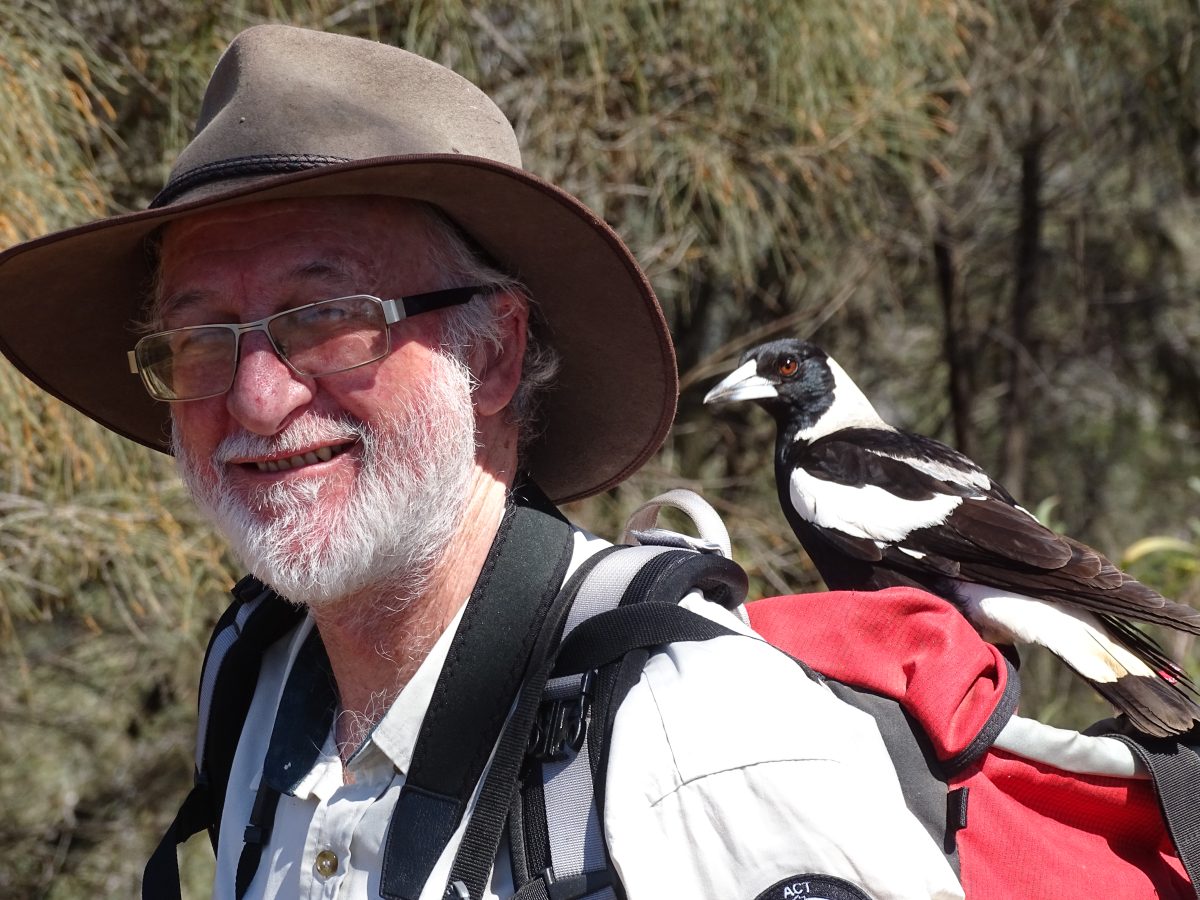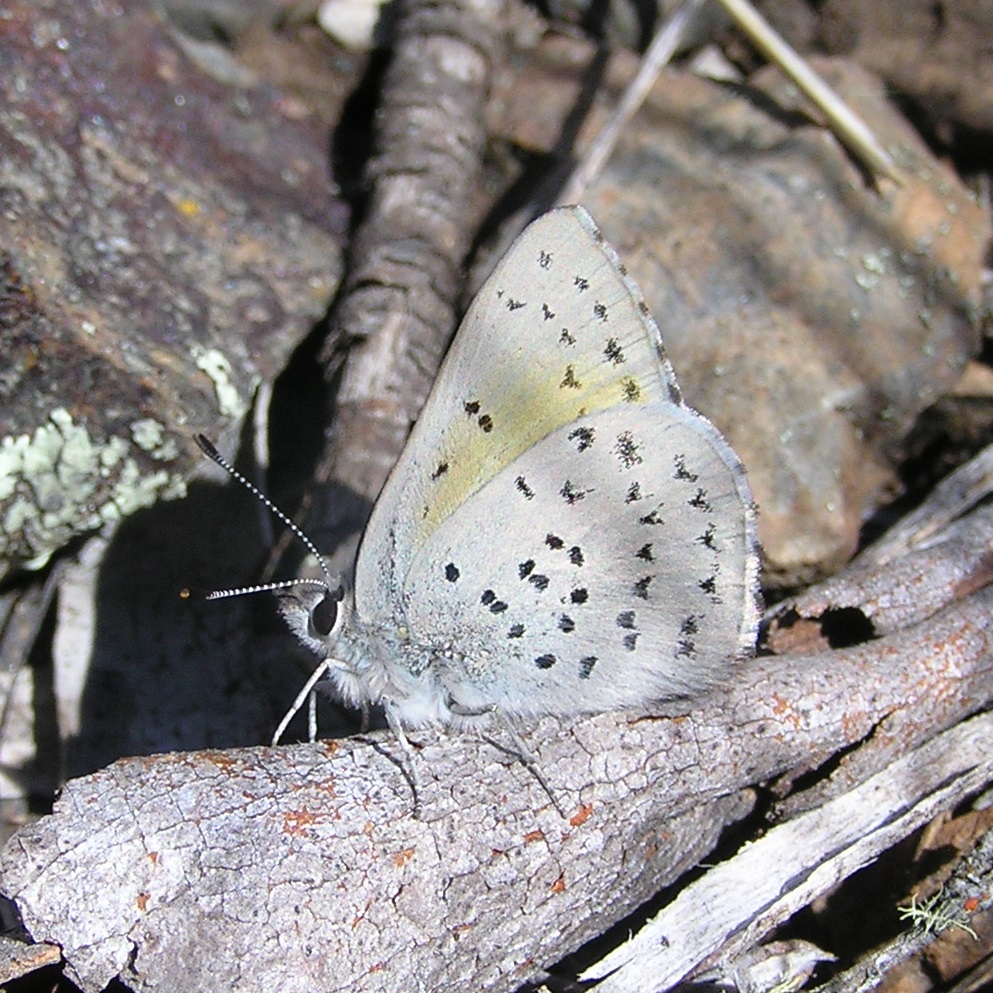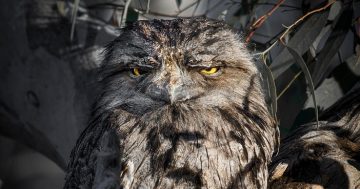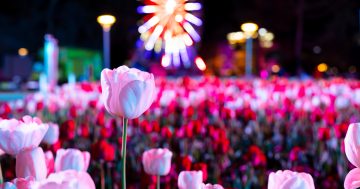
Canberra Nature Map administrator Dr Michael Mulvaney and his friend are on a trip to explore other wildlife in the bush. Photo: Roy McDowall.
The photographer posted an image of what she thought was one of the abundant Common Blue butterflies on the Canberra Nature Map.
Like many Canberra amateur photographers, she had shot hundreds of images of local wildlife, some of which remained buried on her phone or in photographs lost in drawers. But this one was different.
What she thought was a common local insect turned out to be the only record of the endangered Purple Copper Butterfly outside the Bathurst region in the Central Tablelands of NSW.
And the story gets even better, according to Canberra Nature Map (NatureMapr) administrator Dr Michael Mulvaney. Two years later, the ACT was found to contain 98 per cent of the global habitat of the butterfly, a species that requires nuanced fire management.
This was citizen science at its best, Dr Mulvaney said. And he has organised a competition to promote just that – inviting local photographers to share their images on the map for everyone to see and learn from.
“Canberrans spending at least part of their summer holiday rummaging through their image collections can do much to help our region’s plants and animals,” he said.
“This competition hopes to inspire residents to uncover the wealth of information contained within wildlife photographs that lie buried amongst the years of personal image files and social media postings.
“The value of these images to science and conservation can only be revealed if they are shared and placed on a citizen science platform, such as NatureMapr.”
He said the tale of the endangered Purple Copper Butterfly was only one of the success stories so far. He said another photographer captured an image of what she thought was an unusual butterfly laying eggs. She didn’t know what it was, but thanks to its appearance on the map, experts soon determined it was the only known breeding location of the Small Ant-Blue Butterfly recorded anywhere in the world in the last two decades.
The third was when a photographer posted a photo of what he knew was a rare Pencilled Blue Butterfly.
“But what he didn’t realise,” Dr Mulvaney said, “was that his was the first image of this butterfly from the subalpine and the differences his photo revealed led to the discovery of a new species, the Spotted Trident Blue.”
Dr Mulvaney said the value of having thousands of eyes looking at the map was “staggering”.
“On a fortnightly basis, a sighting of a high-risk new weed incursion is recorded and often removed on the same day. Daily Canberra Nature Map is guiding weed, fire and other land management and is consulted as part of planning and development decisions.
“Over 250,000 individual sightings have already been made and have established a comprehensive account of our region’s wildlife, which includes pictorial guides of over 12,000 species. This information has transformed our knowledge of our local plants, animals, fungi and cryptogram, and how we manage them.”

This image of a Spotted Trident Blue butterfly, posted on the Canberra Nature Map, helped lead to the discovery of a new species of the butterfly. Photo: Matthew Frawley.
Through this new competition, Dr Mulvaney has invited people to dig through their collections of photographic treasures to find wildlife images that may tell wider stories.
“There is so much more to learn and people are just sitting on piles of hidden treasure,” he said.
“Through the competition, we seek to entice those holders of wildlife images to post them on the Canberra Nature Map.”
The photos will be judged on artistic and conservation merit and divided into categories depending on the age and type of wildlife photographed.
The winning entries will be exhibited at the CSIRO Discovery Centre from mid-May to mid-June 2024.
Entries close on 30 March.















